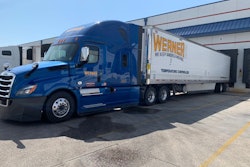
In simple terms, a Fair Market Value (FMV) lease gives a fleet use of an asset for an agreed upon number of months under a set of contractual terms. Payments are typically made monthly and the length of the lease will vary depending on the asset’s duty cycle.
Since a FMV lease is referred to as a “walk-away” lease, the lessor assumes the residual risk for the asset at the end of the lease. Because FMV lessors have an in-depth knowledge of the residual markets they are, in many cases, able to hold a stronger residual position than the lessee may be willing to hold. This adds a cash flow benefit to the lessee in the form of a lower monthly payment. Additionally, the lessee does not have to deal with market conditions at lease end and the time it may take to sell the asset as it may sit idle on the back-end until sold.
Many fleets will tie their lease term to coincide with the vehicle’s warranty so they will not incur major repair bills if something goes wrong with the asset during the term of the lease.
When it comes to FMV leases there is no one set term that makes sense for every fleet. Rather a fleet should work with a lessor that can help determine the proper length of the lease based on their history, expected usage and data analytics. In order to perform a proper analysis, the lessor will need as much data as possible on existing assets including things like make/model/year, miles driven, average fuel economy, maintenance and repair costs, etc.
It is also helpful if the lessor has access to data from other fleets that is has aggregated to form a benchmark tool. That way a fleet is not only benefitting from its own fleet’s data but is also getting an insight into how others in the industry are performing.
It is also good to select a lessor that can offer flexibility in terms of extending or shortening the terms of the lease. This will allow a fleet to respond better to changing market conditions or changes to its own operation. For many fleets the COVID-19 pandemic had a significant impact on the number of miles they drove. For fleets delivering groceries, PPE supplies and medical equipment, miles may have skyrocketed. Fleets delivering other kinds of products may have ended up with assets sitting idle. Having the ability to make changes to the length of the lease helps the fleet get the best total cost of operation (TCO).
An additional benefit of FMV leases is that it leads to a more regular asset replacement cycle. Fleets that own their equipment may be tempted to extend an asset’s useful life in order to avoid a capital expenditure. However, that might not result in the best TCO. With FMV leases, assests are retired on a set schedule allowing fleets to keep their equipment up to date and spec’d with the latest safety and fuel efficiency technology. A side benefit is that drivers prefer newer equipment. Given the ongoing driver shortage, having new equipment come into the fleet on a regular basis can be a great driver recruiting and retention tool.
FMV leases offer many benefits to fleets especially when entered into with a lessor that can use data to determine proper replacement cycles that result in improved fleet efficiency.
Rob Hoysgaard is Vice President of Sales for the Northeast Region, Capital Equipment Solutions, for Corcentric. In his role, he is responsible for analyzing customer fleets in order to optimize their total cost of ownership. Rob has extensive knowledge of asset acquisition, equipment finance, asset services, and remarketing.











